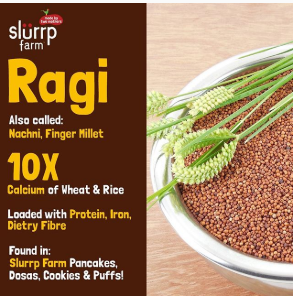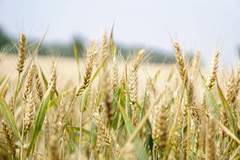What are millets?
As described in the Oxford Dictionary, millet is “a type of plant that grows in hot countries and produces very small seeds”. The grains—consumed in many indigenous cultures, including the Indian subcontinent, over centuries—are derived from various warm-weather cereal crops that belong to the grass family, not dissimilar to rice and wheat.
According to a report by the Indian Institute of Millet Research, these small-seeded plants are grouped together not on a taxonomic basis but rather an agronomic one. Many assume that millet is a single variety of grain, but there are over 500 varieties of millets within the main types.
Types of millets:
Millet is broadly classified into two categories. One is major millets, which includes the likes of pearl millet (bajra) and sorghum (jowar). The second category of millets is known as minor millets, and includes finger millet (ragi), kodo millet, barnyard millet, little millet, proso millet and foxtail millet. These millets are known across many regions of the country, where they are referred to by local names.
|
8 Millet Recipes Using Different Millet Varieties – Yummy And Easy |
Millets have traditionally been part of everyday meals in many semi-arid regions of Asia and Africa for many centuries. A number of factors led to a gradual decline in the production and consumption of millets in the 20th century, especially during the latter half. These included the labour-intensive process of dehulling many millet varieties, a perception of millet as ‘poor people’s food’, its use as fodder for cattle and birds and the Green Revolution, which promoted the production of wheat and rice over other grains to curb food shortage. While the Green Revolution helped propel India towards higher rice and wheat production starting from the 1960s, the emphasis came at a great cost to millet production.
Nutritional and ecological merits of forgotten foods:
Food is one of the most fundamental necessities of life. However, food isn’t merely a substance for staying alive, but a means to enhance the quality of life by assuring the required nourishment for human beings. The lack of dietary diversity has been cited as a major cause of malnourishment, not just in India but across the globe.
With the long-standing popularity of rice and wheat and their frequent usage in daily meals as well as packaged food products, nutrition experts suggest the need for alternate foods that can fill the nutritional void left by the overconsumption of a few grains. Millets have arrived at the foreground, following and in tandem with the rapidly expanding use of cereals such as oats, quinoa—a South American staple, and teff which is traditional to South Africa.
Nutritional Benefits:

Millets are imbued with nutritional benefits which have led to these grains being posited as a one-stop solution to resolve the crisis of malnourishment and food security issues. Millets may not be the exclusive means to reducing malnourishment, but their documented benefits suggest that these grains can address the gaps in contemporary dietary habits to a large extent.
According to Dr B Dayakar Rao, principal scientist at IIMR, “Millets contribute substantially for food and nutritional security and possess unique nutritional characteristics. They specifically have complex carbohydrates, rich in dietary fiber as well as unique in phenolic compounds and phytochemicals having medicinal properties. Millets are a natural sources of iron, zinc, calcium and other nutrients that are essential for curbing the problem of malnutrition in India.”
Millets are rich sources of fiber, vitamin B-complex and minerals, as well as polyphenols, lignans, phytosterols, phyto-oestrogens, phytocyanins which act as antioxidants, detoxifying agents, and immune modulators. Additionally, millets are gluten-free grains, an advantage in the midst of increasing cases of celiac disease and gluten intolerances that restrict or entirely prohibit the consumption of wheat. The nutritional benefits of various millets will be elucidated in the following chapters.
Substantiality:
The emphasis on these grains is based not only on their nutritious merits but also on the expectation that these can offer a sustainable solution to the amplifying crisis of food security and environmental damage. These crops are greatly resistant to the adversities of cold, drought and salinity, and thus suitable for cultivation on dry and arid lands.
Ashutosh Sharma and Manish Kumar Goel have directed attention to the “increasing trend in hydroclimatic disturbances like droughts” which they suggest will affect vegetation growth and crop yield risking food security. This assumes special significance in the country, where farmers are struggling with the effects of drought leading to grave concerns about the responsibility of providing food, and nourishment, for 1.2 billion people.
The capacity of millets to thrive in harsh climate conditions offers an immense potential to rescue agricultural communities ridden by drought and poverty. The revival of underutilized and neglected crops such as millets can “exert significant influence on the cultural traditions and diversity and contribute to the self-identity, self-esteem, and visibility of local communities”.
Limitations:
Despite the well-documented benefits of millets, their production and consumption remain limited. Lack of awareness is a major reason behind low consumption, combined with an assortment of factors that include but are not limited to diversity of food culture, strenuous post-harvest processing, technological challenges and need for greater government support. How rural, and urban farmers, navigate these assorted concerns and challenges is one of the key concerns of this paper. Using multimedia interactions and field visits, we make an effort towards understanding the real-time successes and struggles of millet farmers as well as the many individuals and groups that work tirelessly to promote these grains. We hope to shine a small spotlight on the unsung heroes in the world of millets.
Stay tuned for part 3 of our millet white paper project where we would talk you through the elevating the social status of millets. This part will also focus on their role in ensuring a healthy diet for kids and adults.

